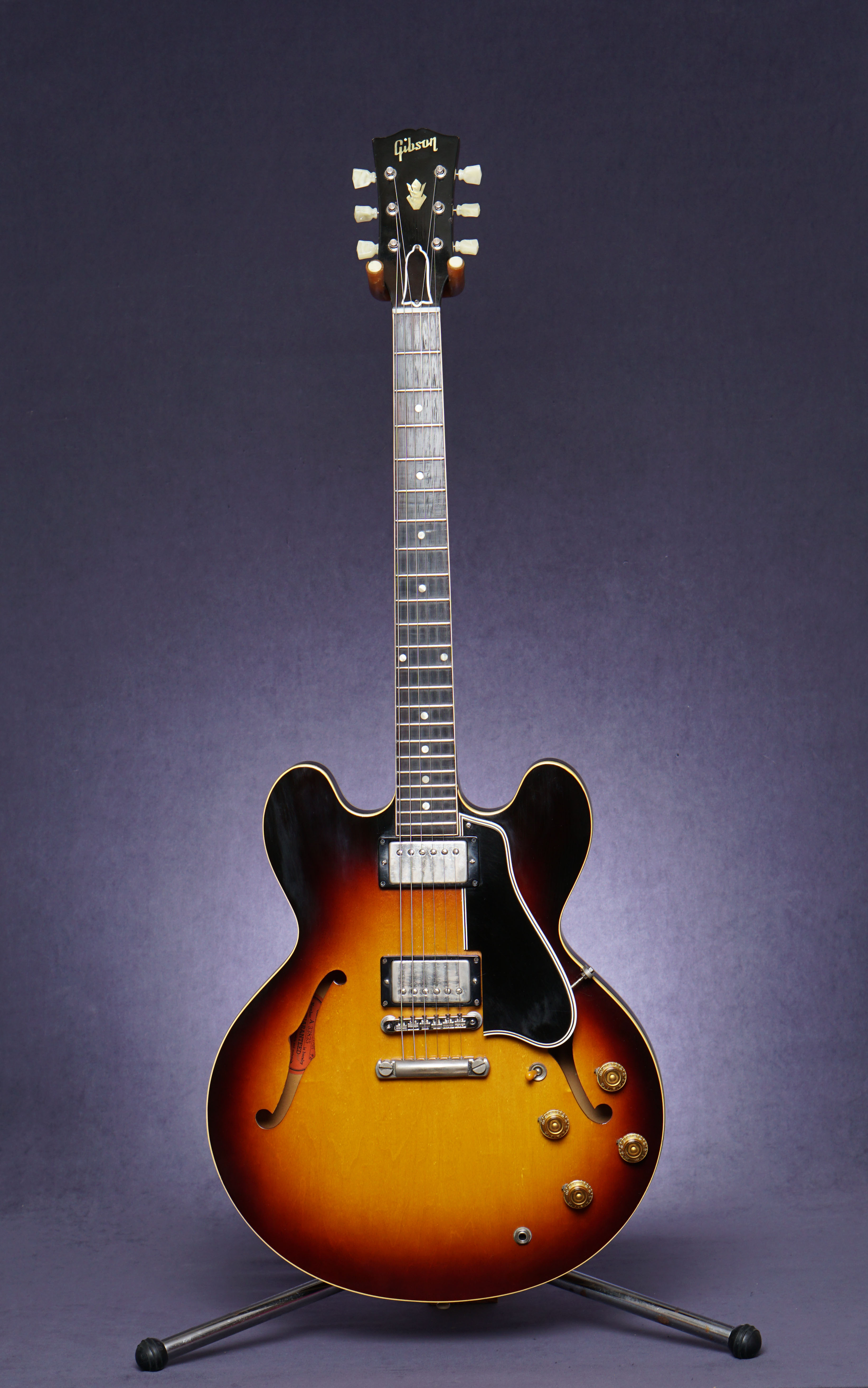Casino Vs Es 330

| Gibson ES-330 | |
|---|---|
| Manufacturer | Gibson |
| Period | 1959 — present |
| Construction | |
| Body type | hollow |
| Neck joint | Set |
| Scale | 24.75' |
| Woods | |
| Body | maple (laminated) |
| Neck | mahogany on most models in most periods; sometimes maple |
| Fretboard | rosewood on most models, ebony on some |
| Hardware | |
| Bridge | Fixed |
| Pickup(s) | 1 or 2 P-90s |
| Colors available | |
| Vintage Sunburst, Cherry, Black, Natural | |
The Casino had no pre-Gibson equivalent, and corresponds to the Gibson ES-330 launched the previous year, having the same dimensions and construction, but with different headstock shape and (sometimes) tailpiece. Like the 330, the Casino had a completely hollow body, i.e. Without the center maple block present in the 335 / 345 etc. My thoughts are the stock Casino is a fine instrument and the Lennon was better of the two it should be its cost is much more. The Gibson ES 330 L just had hotter pickups a bit darker more growl and playing room also a chunkier neck my choice over the others. Casino Vs Es 330, poker simulation analysis, poker rushden, la poste roulette marianne. And by 1972, the bona fide Gibson ES-330 had gone out of production The Sounds & Style Of The ES-330. If you’ve never played a 330 (or a similar Casino), you may be expecting no discernible difference to a 335. With no full center block, the ES-330 is light. Even a semi-hollow 335 can rival a solid Les Paul for weight due to its.
The Gibson ES-330 is a thinline hollow-body electric guitar model produced by the Gibson Guitar Corporation. It was first introduced in 1959.[1]
Though similar in appearance to the popular Gibson ES-335 guitar, the ES-330 is quite different: the 330 is a fully hollow thinline guitar, not a semi-hollow guitar with a center block. Also, the 330 has two single-coilP-90 pickups, in contrast with the two humbuckers on the 335.
The 330 neck originally joined the body at the 16th fret, not the 19th, like the 335.[2] In 1967/1968, Gibson changed it to join at the 19th fret. Current Gibson reissues are known at ES-330L to denote this longer ('L') feeling neck, and reissues of pre-68 330s have the 16th fret join as they would have originally. Note that the scale length of both models (16-fret and 19-fret) is the same, the body is just different (the 16-fret model has markedly taller upper bouts and thus more hollow body area).
The guitar has been produced both as a single-pickup instrument (ES-330T) and as a dual-pickup instrument (ES-330TD). Somewhat unusually, the ES-330T had its pickup mounted halfway between the bridge and the end of the neck, not in one of the usual neck or bridge positions. It has been available in sunburst, cherry, natural, walnut, and sparkling burgundy finishes. Tailpieces used are usually trapeze or Bigsby vibrato tailpieces. Due to its lack of popularity compared to the other Gibson thinline guitars (such as the ES-335, ES-345, and ES-355), the ES-330 was discontinued by Gibson in 1972. Since then, it has been reissued a few times by the Gibson Custom Shop division.
Famous ES-330 players include Emily Remler, B.B. King, Slim Harpo, Grant Green, William Reid, Roky Erickson, Chris Bell, Zoot Horn Rollo, Brian Jones, Brad Simpson of The Vamps, Elliott Smith and Mafuyu Sato.
It is notable that the ES-330 has a nearly identical cousin, the Epiphone Casino (Epiphone was and is a subsidiary of Gibson), which was played in particular by the Beatles’ John Lennon, George Harrison, and Paul McCartney, and The Rolling Stones’ Keith Richards.
References[edit]
- ^'Guitar Review: Gibson Custom ES-330' by Tom Beaujour. Guitar Aficionado, April 17th, 2013[1]
- ^Duchossoir, A. R. (1981). Gibson Electrics. Mediapresse. p. 158. ISBN9780881882698.
Epiphone Casino Vs Es 330

External links[edit]
Epiphone Elitist Casino Vs Gibson Es 330
